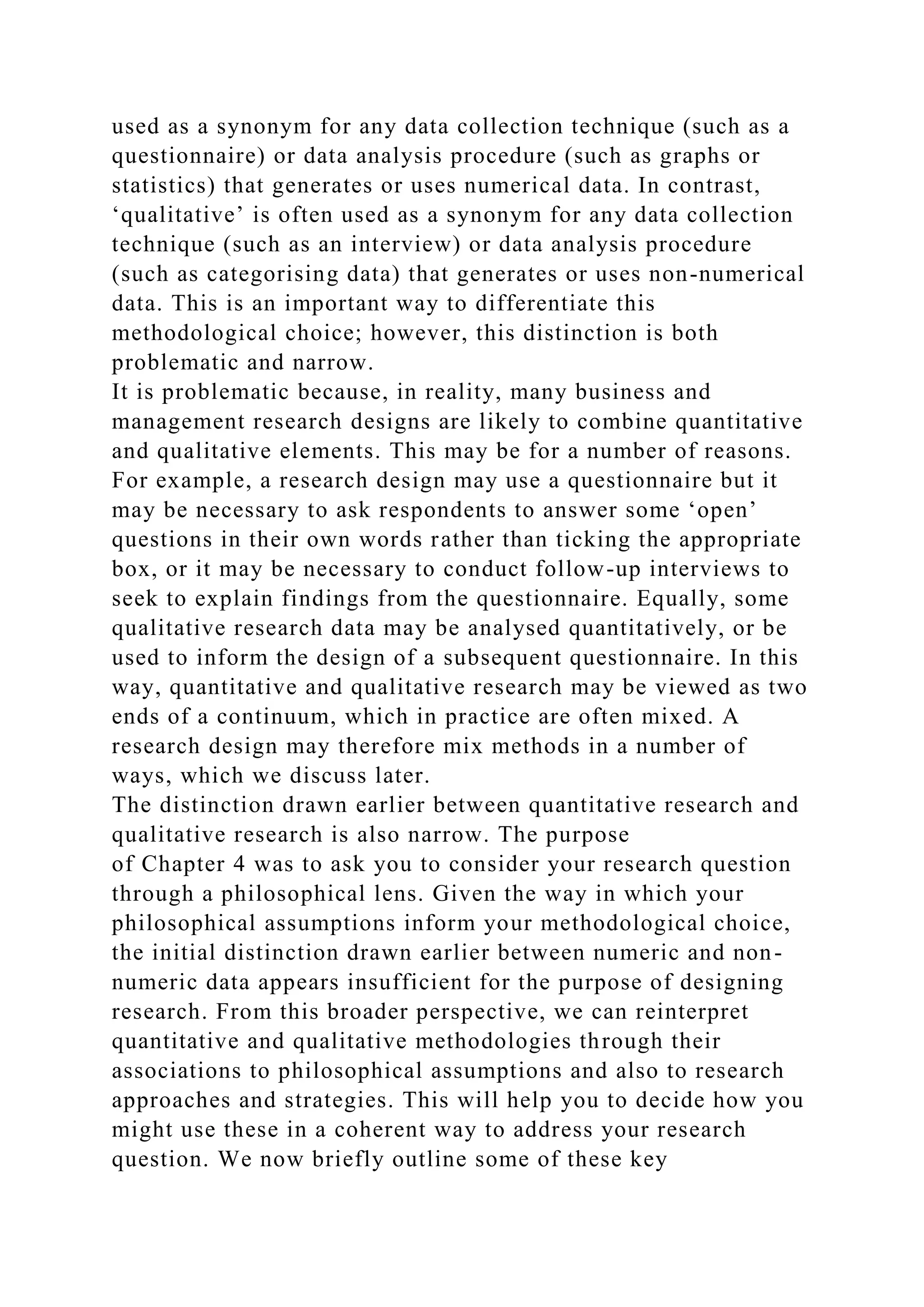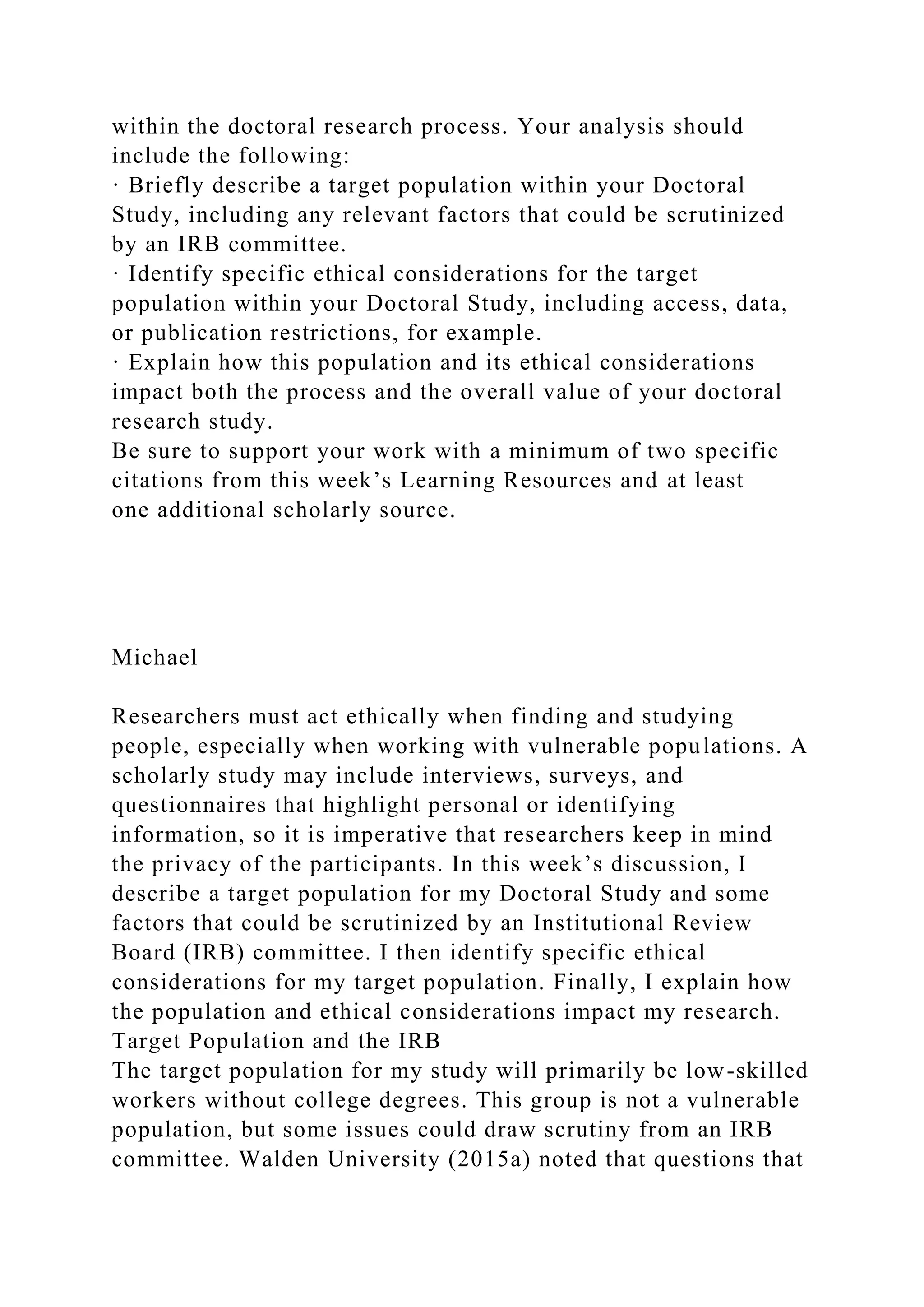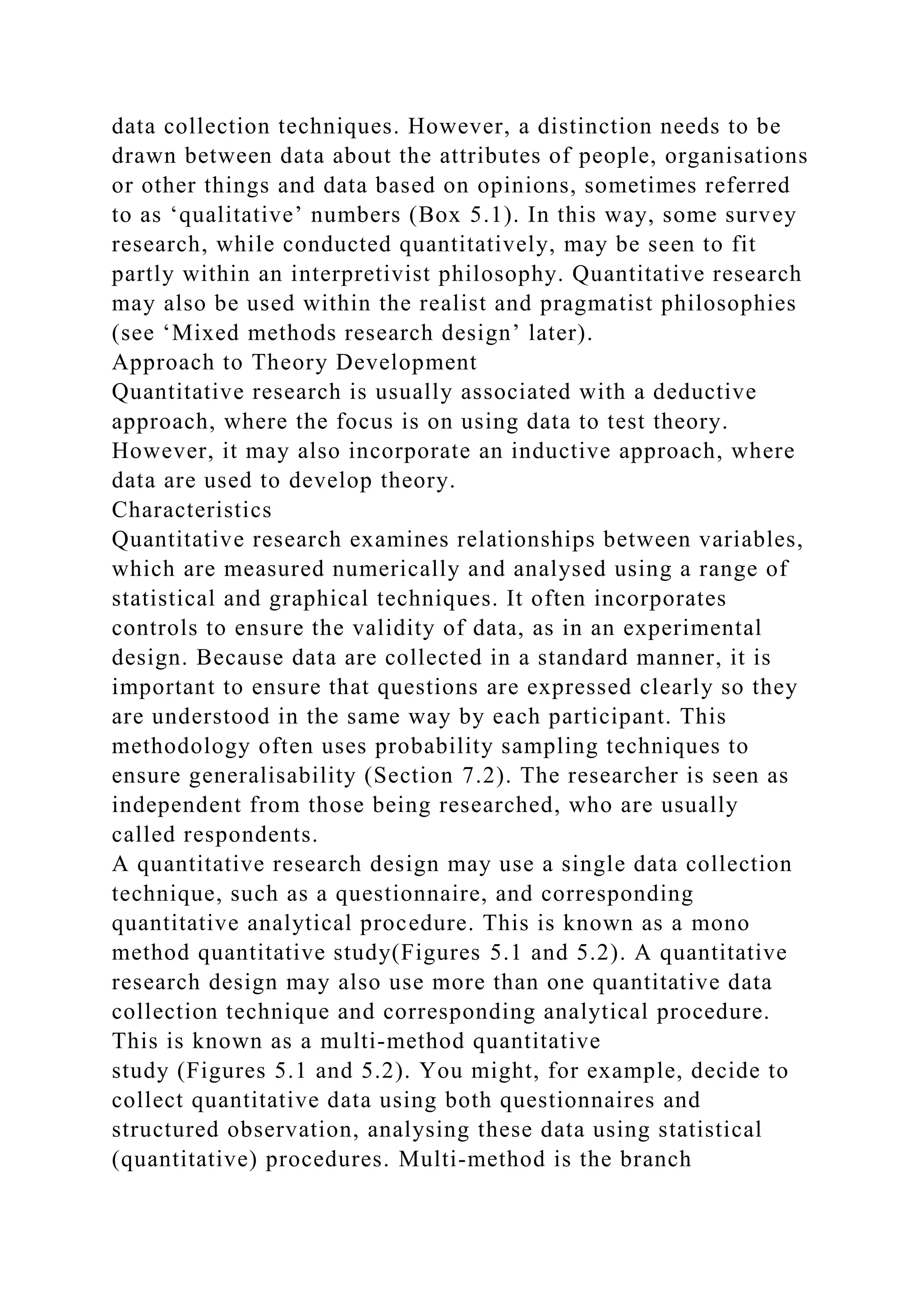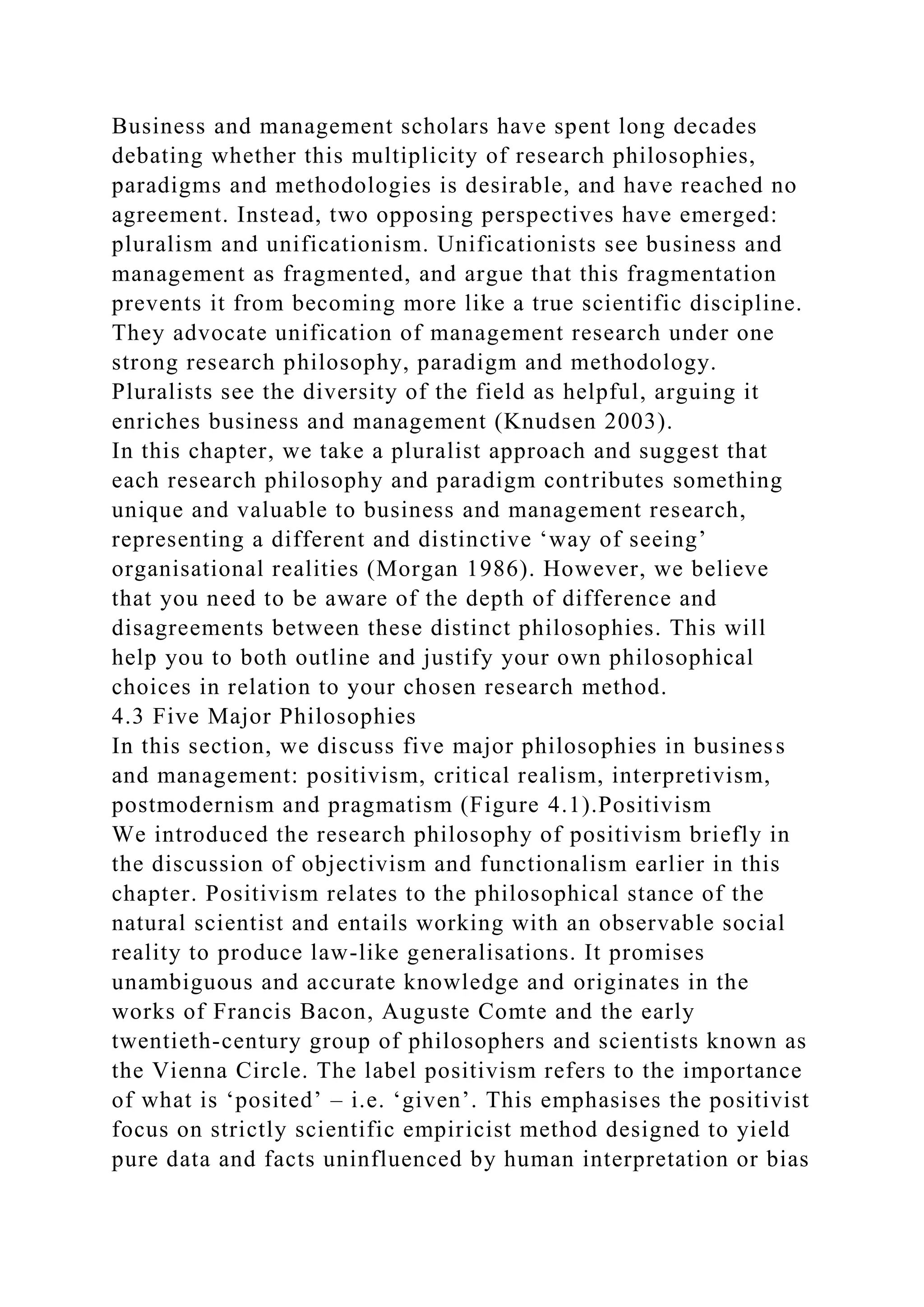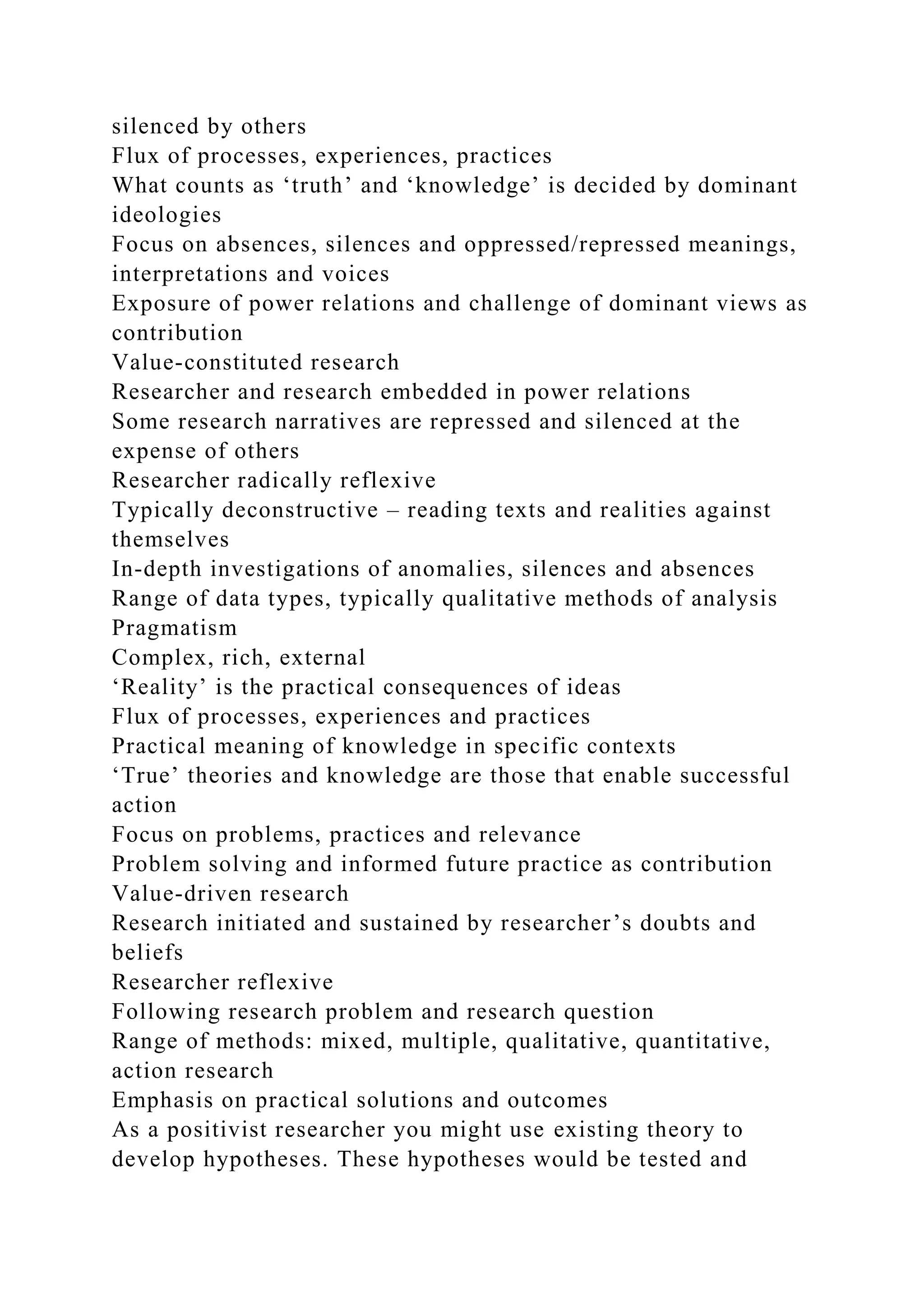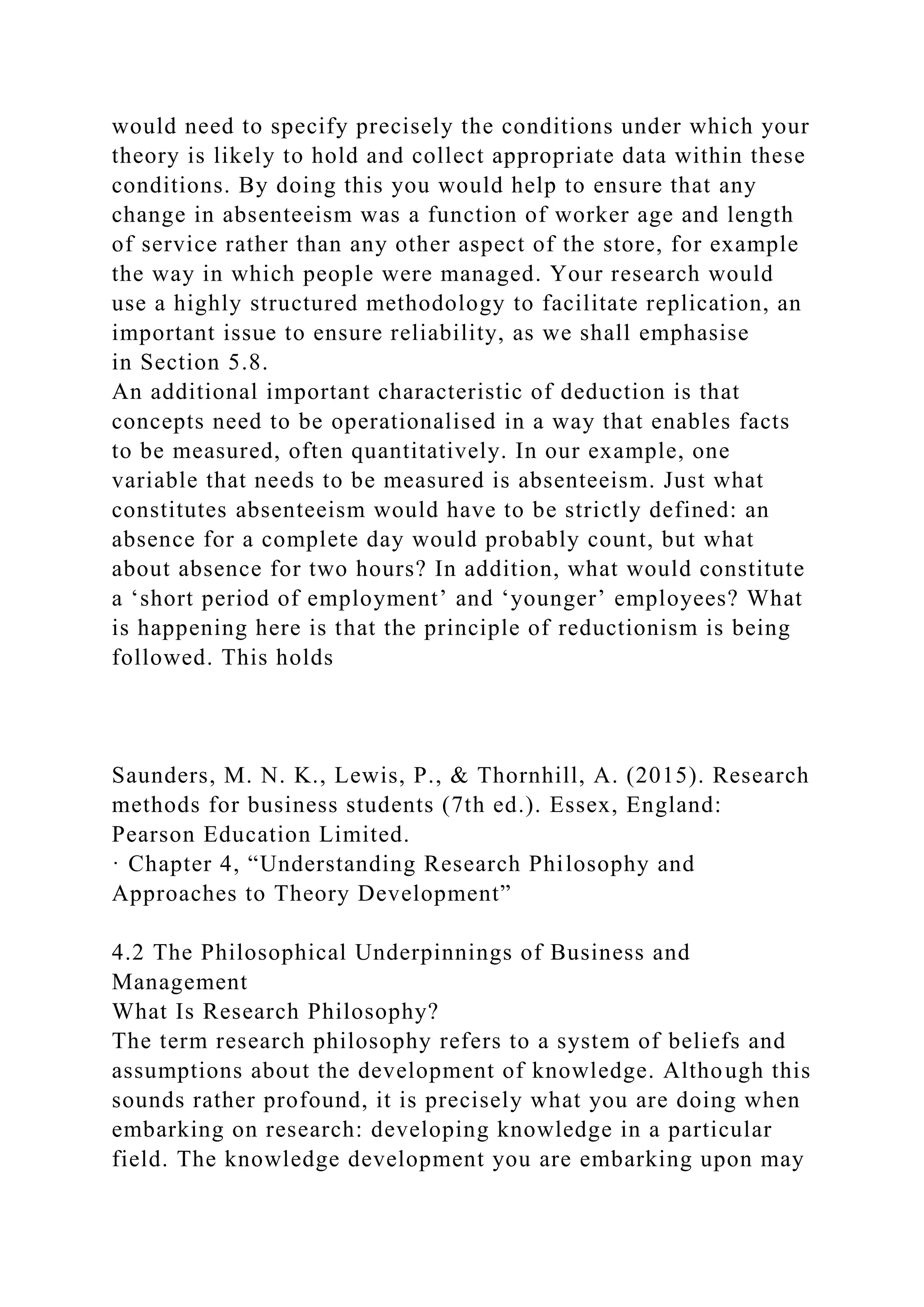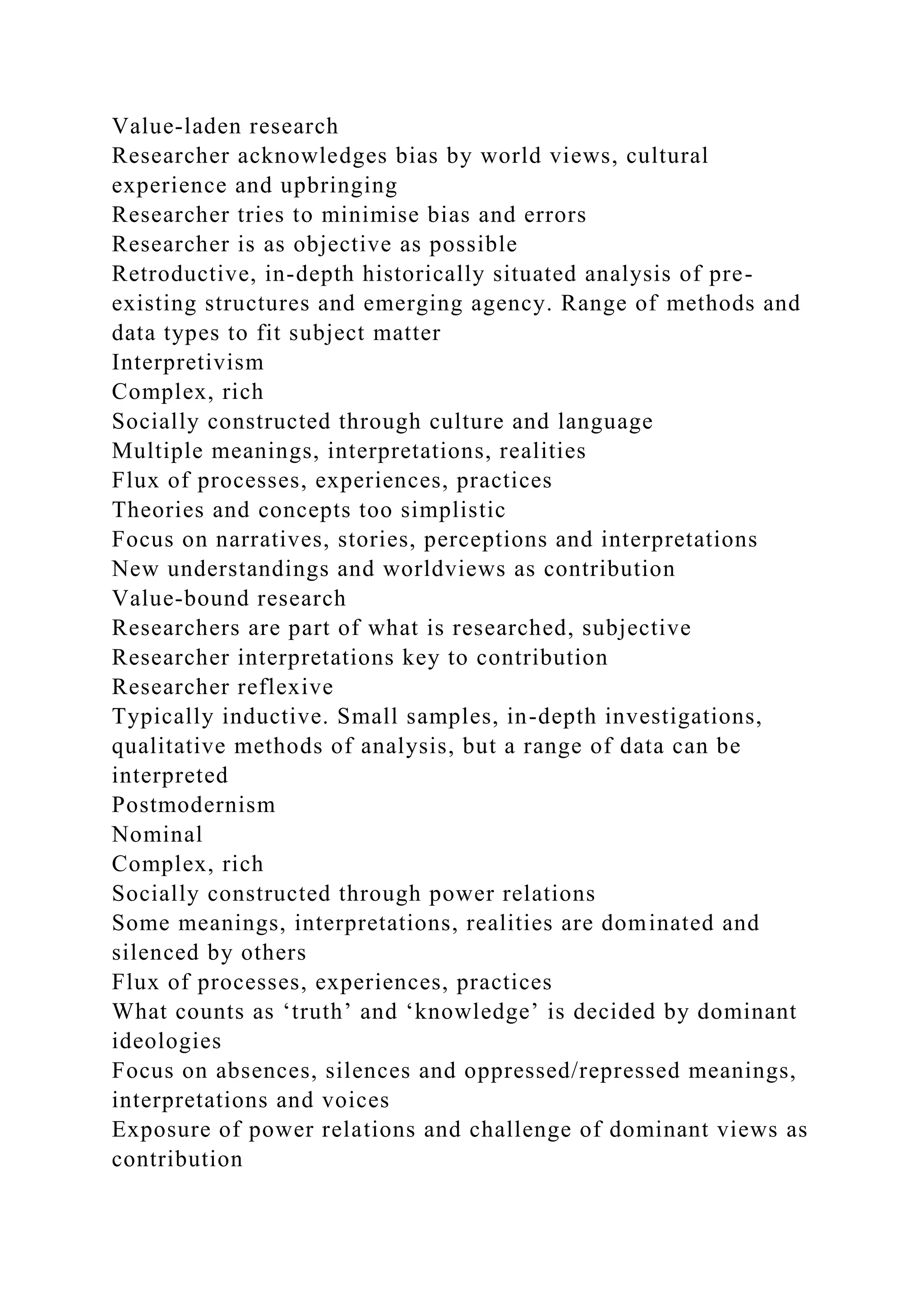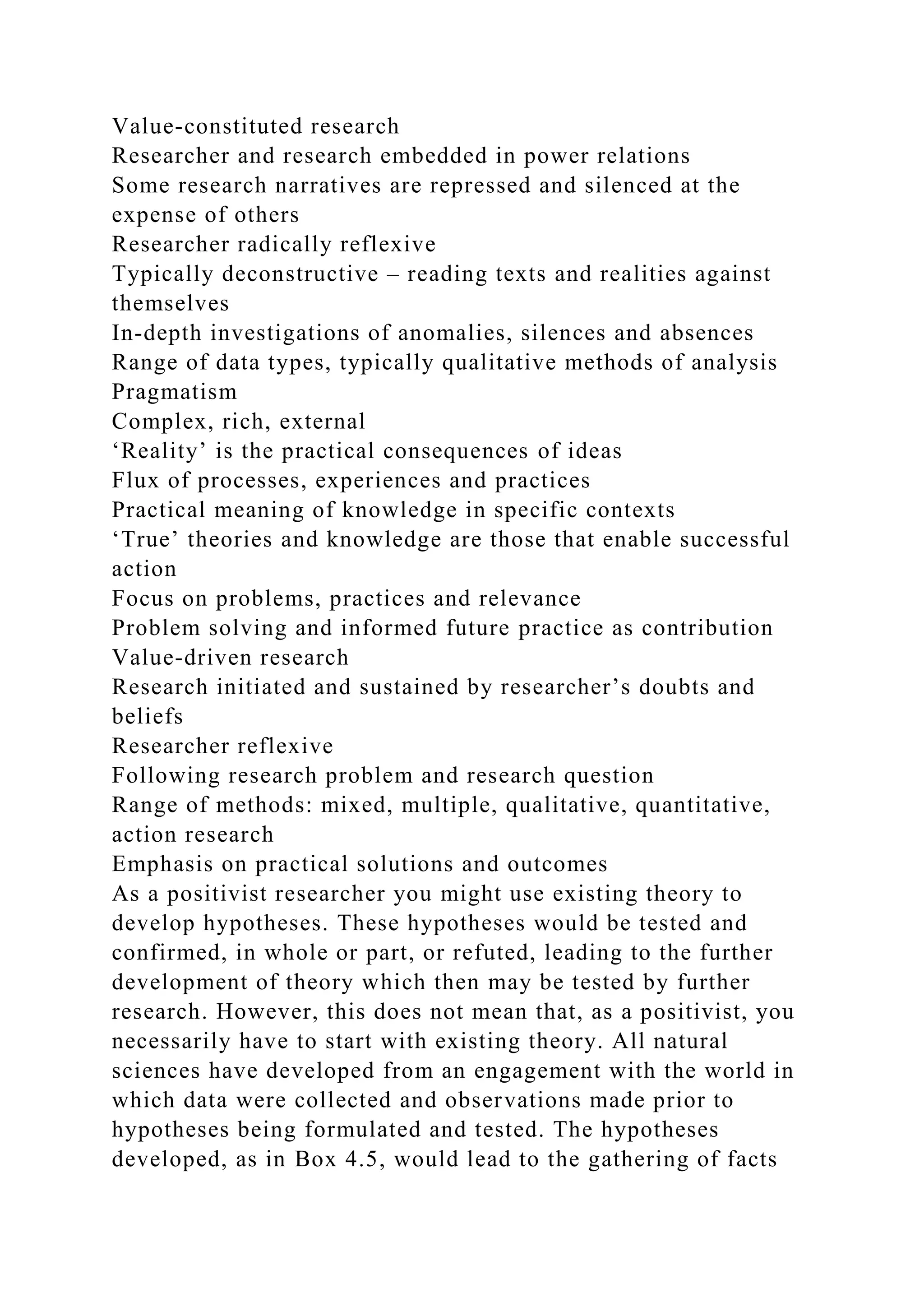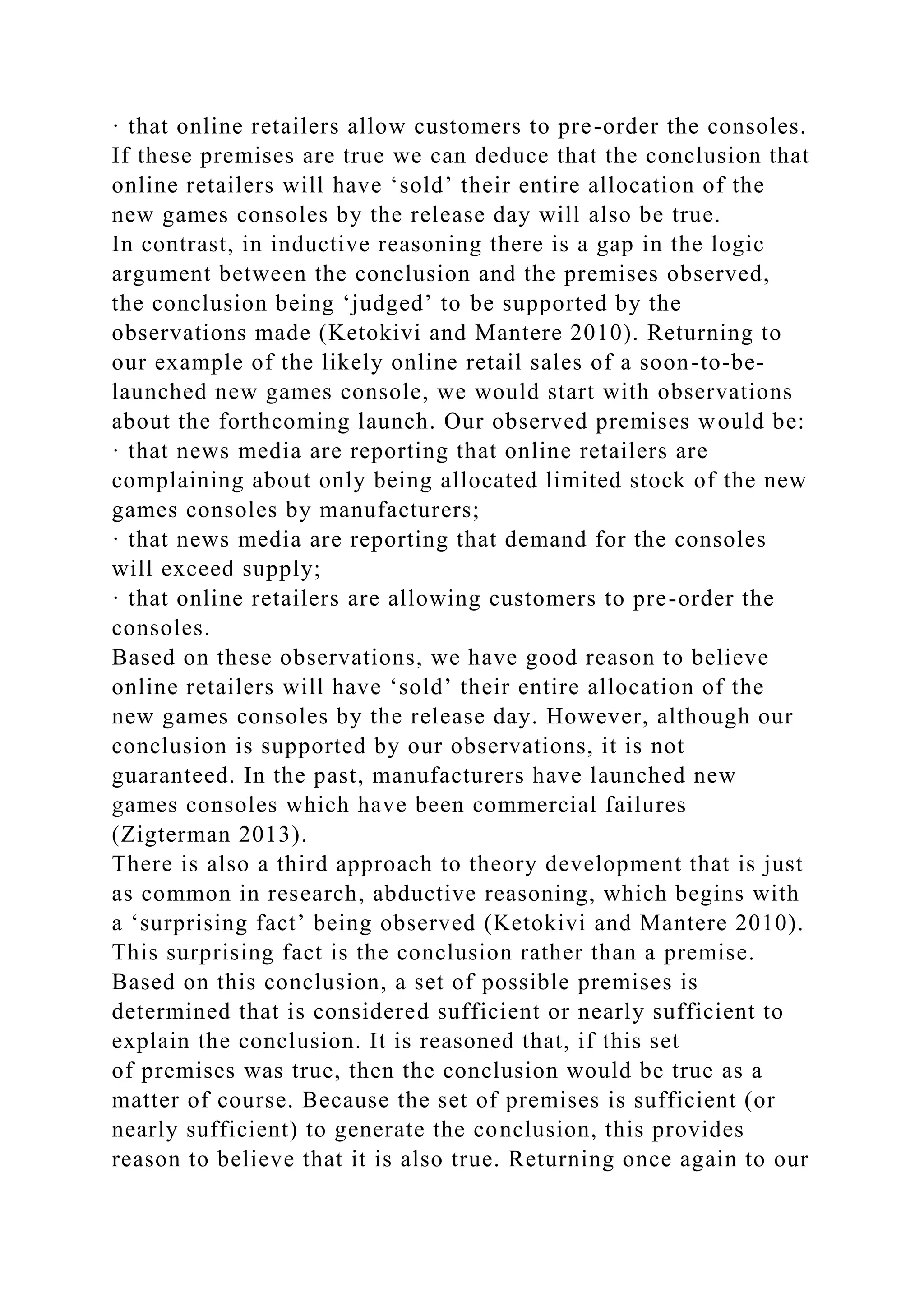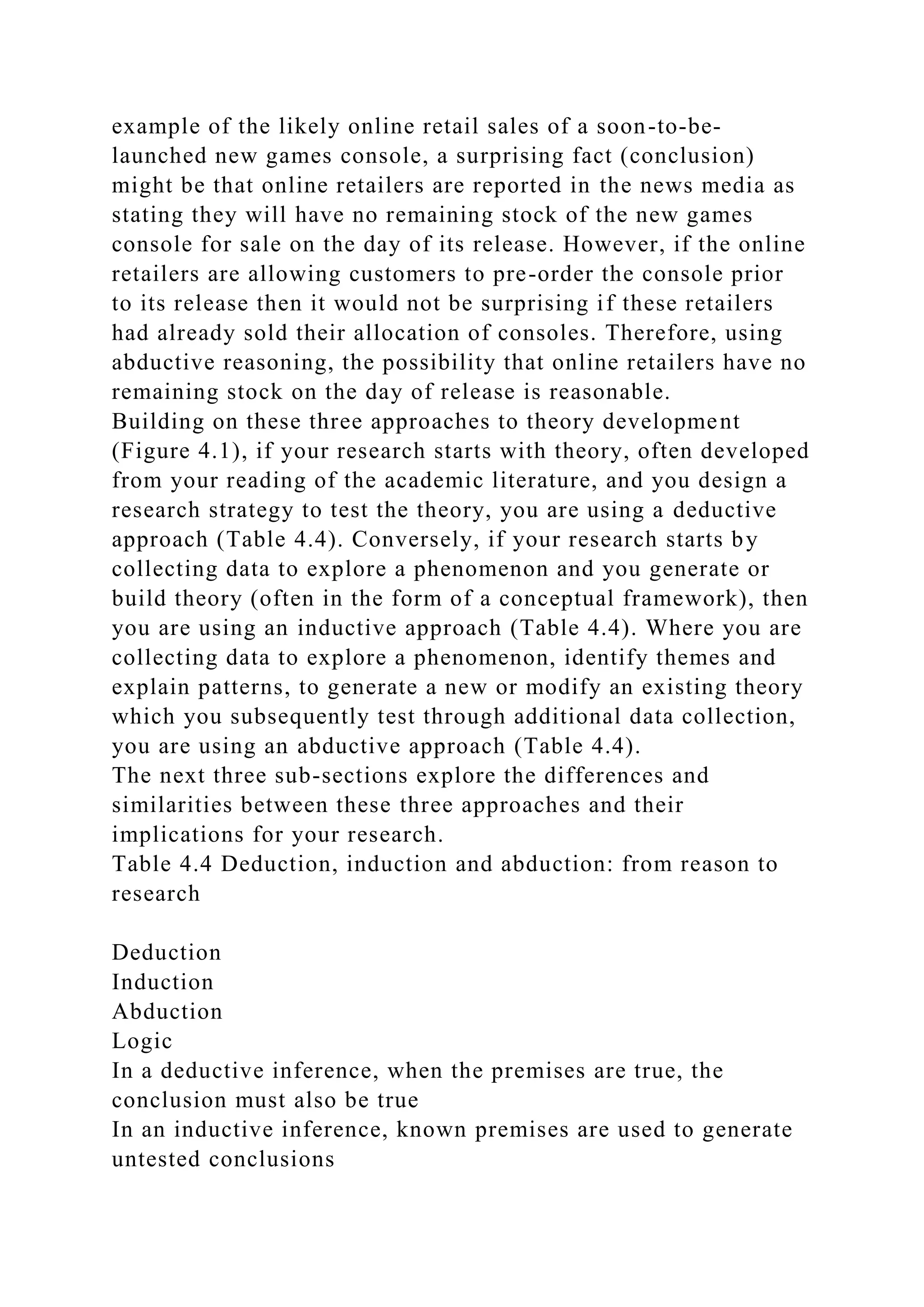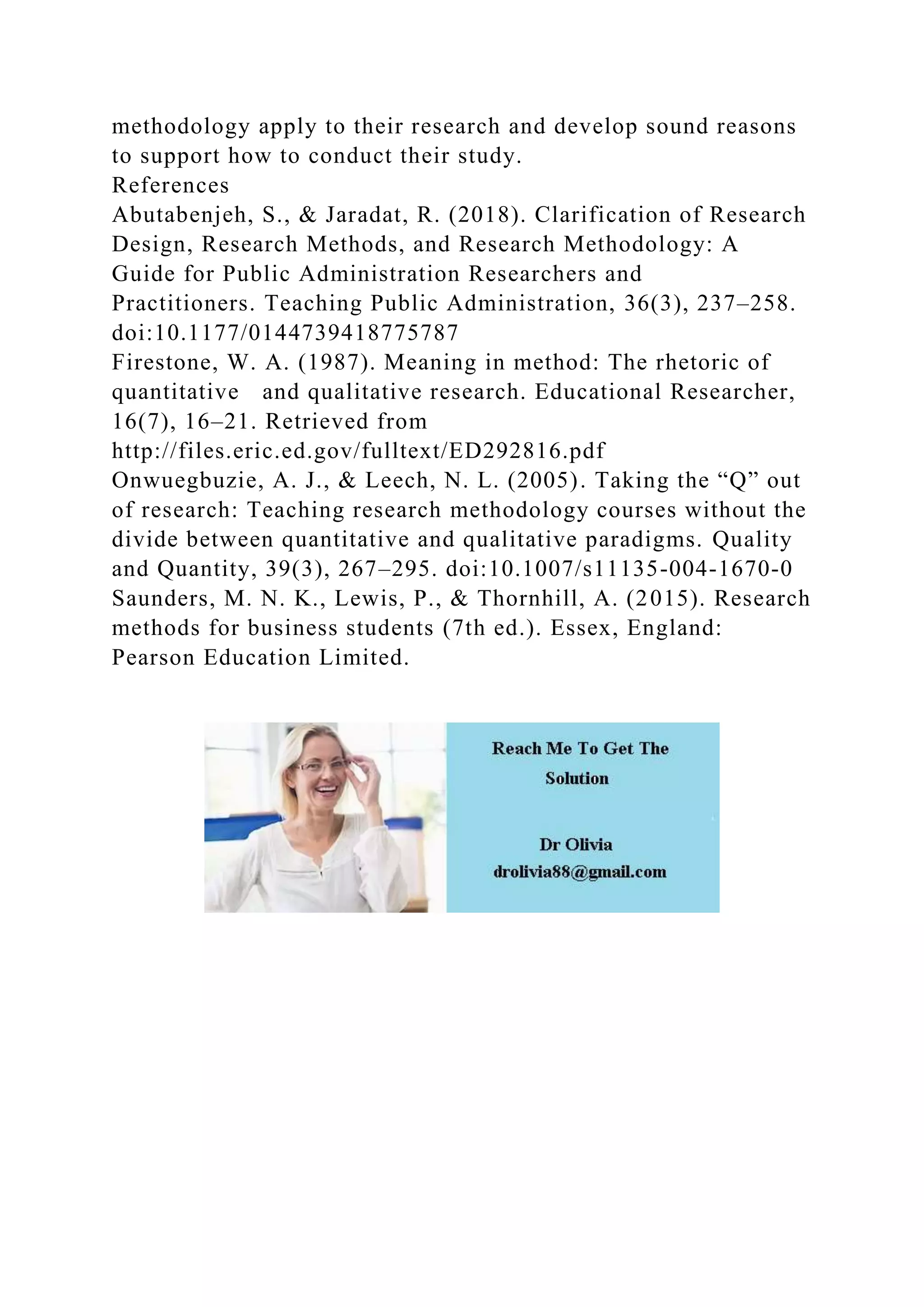Chapter 5 outlines the process of formulating a research design, emphasizing the importance of clearly defining research questions, objectives, and methodologies, whether quantitative, qualitative, or mixed methods. It discusses the need for coherence in the design and highlights the ethical considerations and constraints researchers may face, such as access to data and participant anonymity. Additionally, it emphasizes the significance of understanding the overall research plan while differentiating between design and tactical details.



